The One Where I Speak Some French
On Languages
I often wish I had the foresight to start learning a second language when I was in preschool or elementary school. Being able to easily shift between French and English, not realizing the objective difficulty of switching back and forth, is something I have longed for since I began French in middle school. This wish is most prevalent when I’m attempting to use French on a daily basis or living in a bilingual country. I have been 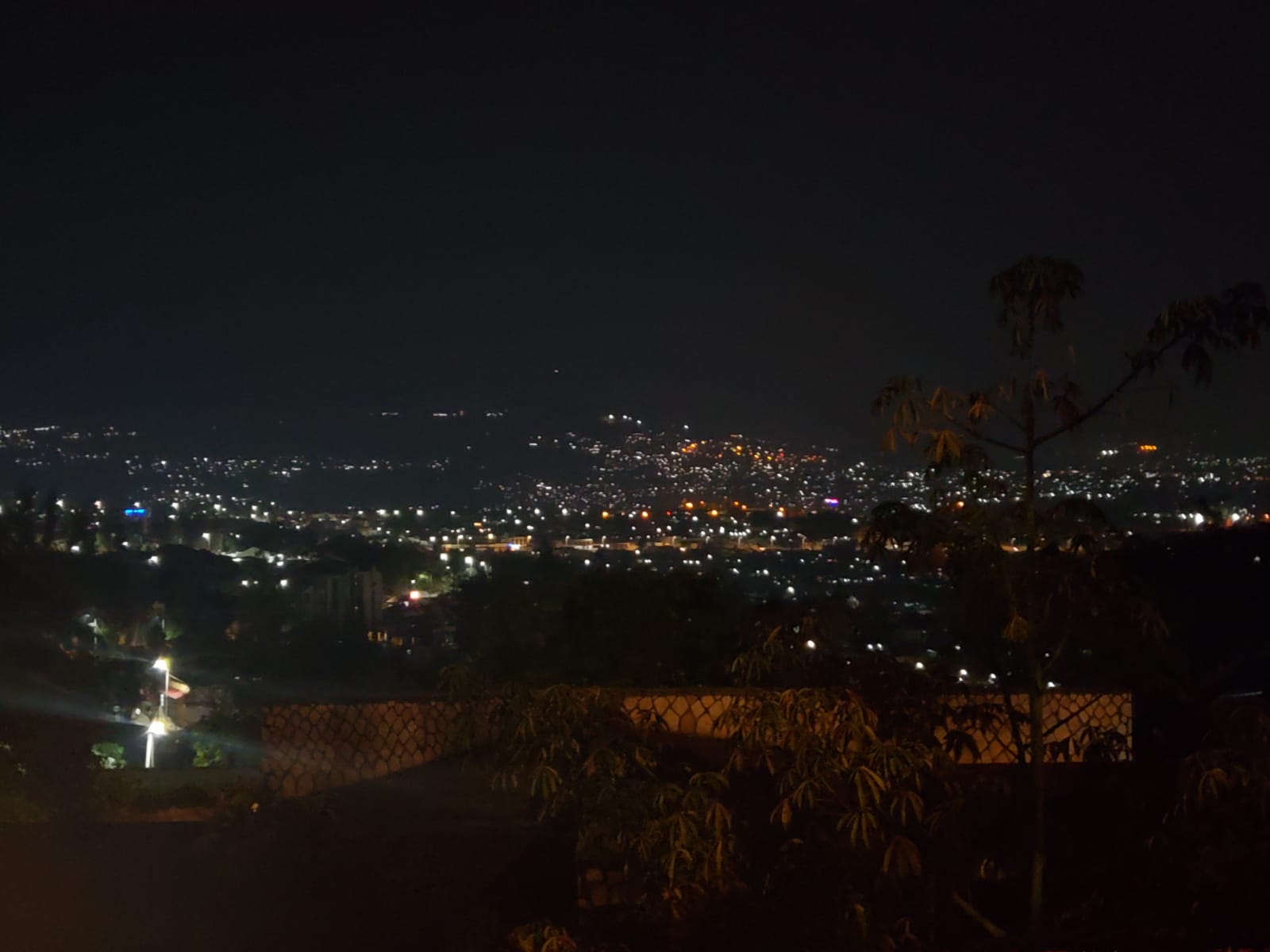 especially wanting this skill since arriving in Rwanda. Although my French skills are passable, and I’m able to use them during work and in conversations, I long for the ease of being a bilingual speaker. As anyone who knows a second language can attest to, there’s a stage of bilingualism where you’re not exactly fluent like a native speaker but you’re not a beginner or intermediate student anymore. You’re still figuring out exactly how your lips and throat moves to make the language’s basic sounds, and you’re probably constantly translating between the two languages in your head. This is where I’m at, and it’s honestly exhausting. I’ve gotten a bit better since moving here, as being immersed in the language can often be the best way to learn, but it’s difficult to accept this stage of learning. My coworkers and the people I have met can easily talk to me in English and then turn to another person and have a completely different conversation in Kinyarwanda or French or another language. I know that it will take time for me to (hopefully) get to this stage, but a short burst of a couple of months in a French-speaking nation doesn't’t have many long-term benefits for my language-learning skills. It would be much easier if bilingualism was something we were all born with. But, alas, I’m stuck with learning a language the hard way.
especially wanting this skill since arriving in Rwanda. Although my French skills are passable, and I’m able to use them during work and in conversations, I long for the ease of being a bilingual speaker. As anyone who knows a second language can attest to, there’s a stage of bilingualism where you’re not exactly fluent like a native speaker but you’re not a beginner or intermediate student anymore. You’re still figuring out exactly how your lips and throat moves to make the language’s basic sounds, and you’re probably constantly translating between the two languages in your head. This is where I’m at, and it’s honestly exhausting. I’ve gotten a bit better since moving here, as being immersed in the language can often be the best way to learn, but it’s difficult to accept this stage of learning. My coworkers and the people I have met can easily talk to me in English and then turn to another person and have a completely different conversation in Kinyarwanda or French or another language. I know that it will take time for me to (hopefully) get to this stage, but a short burst of a couple of months in a French-speaking nation doesn't’t have many long-term benefits for my language-learning skills. It would be much easier if bilingualism was something we were all born with. But, alas, I’m stuck with learning a language the hard way.
On that note, part of my duties this week for work was to work on the Success Stories again, as I have been doing for a couple of weeks now. However, this week was a bit different. Usually, I work directly with my coworkers, who explain a success story to me, and then I write up a short blurb on it. This week, my coworkers were busier, so I was handed a huge binder of some of the cases RBJ lawyers took on pro-bono in 2018 and 2019 and was asked to find interesting cases for the Success Story Compendium. These binders are overflowing with sheets that the lawyers fill out, detailing what the case is about, how the lawyer helped the client, and what the outcome of the case was. Most of these forms are in Kinyarwanda, so my task was sifting through all the forms to find the rare ones in French, which I then translated and wrote a story about in English. Reading these client stories was emotional. Many of the detainees had spent weeks or years in prison, waiting for a judge to hear that they were innocent. Some clients stated that they were forced to plead guilty by their previous lawyer, even though they didn’t commit the crime. These stories will be posted on our website at the end of the summer to encourage people to donate to the organization. This will help fund more lawyers, who can assist clients sitting in pre-trial detention or those who can’t afford lawyers.
On Writing & Meetings
This week at work I also helped organize a grant proposal to get funding from the Canadian government. Despite working for multiple non-profits in the past, I’ve never encountered an actual grant proposal. I didn’t really know where to start, so my colleague gave me past grant proposals, written narratives on RBJ and an explanation of the Canadian government’s funding opportunity to help get me oriented. After spending a few hours reading through these documents, I started compiling information to include in the explanation of RBJ, why we would like the money, what we’re going to do with it, and a risk matrix, detailing the most common risks that we’ll encounter in this project and how we’ll attack them. A BIG shoutout to my Legal Research & Writing professor, Professor Kern-Schereer, who taught us how to organize your thoughts efficiently in a persuasive, legal writing. Those skills definitely came in handy! Although much of my writing didn’t make it into the final draft through multiple edits, it was a great learning experience, and I’m excited to more confidently tackle my next grant proposal.
I also finished up the Rwanda Wiki page, which I was assigned by the Geneva office of IBJ last week. Some of the updates include adding a Court of Appeal to remove the backlog of cases the Supreme Court has to hear, a few new international agreements Rwanda entered into, and new jurisdictional rules for the courts. I also added a paragraph from a report by the Rwanda Bar Association, detailing some of the problems with the Rwandan legal system. When the plan was made in 2015, the ratio of lawyers to Rwandan citizens was only one lawyer for every 10,000 citizens. Furthermore, most of these lawyers are based in Kigali, the capital city, and 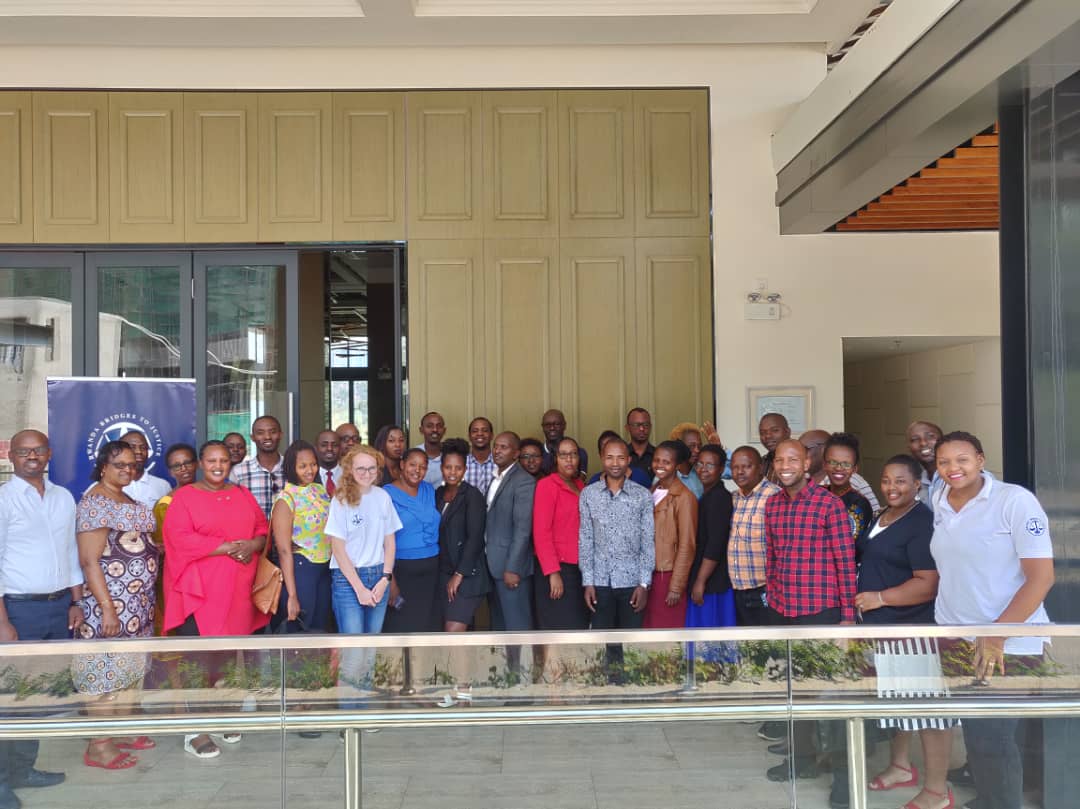 many of them are right out of law school, meaning they provide insufficient legal representation because they lack experience. Although the Rwandan government has made great strides in the past few years to improve the legal system and the economy, they still have a long way to go.
many of them are right out of law school, meaning they provide insufficient legal representation because they lack experience. Although the Rwandan government has made great strides in the past few years to improve the legal system and the economy, they still have a long way to go.
RBJ also held a meeting for their group of pro-bono lawyers as a chance for the lawyers to talk about their common problems during their cases and offer advice to the other lawyers. The meeting was held in Kinyarwanda, but thankfully, someone was taking notes in English, which I used to compile a report. The lawyers spoke about the difficulty of getting to potential clients early in the process to avoid violations of due process rights, like the right to be presumed innocent and the right not to be abused or tortured. The lawyers suggested that RBJ organize more trainings for government officials and police, who also need to know not to violate these basic rights.
On Traditions
This weekend was all about Rwandan traditions. On Saturday, a few friends I have met through the guest house I’m staying at and I traveled out of the bustling center of Kigali into Nyamirambo, a popular, vibrant neighborhood located at the foot of the tallest hill in the city. In 1920, Nyamirambo was a quiet stretch of the city, which was mainly used for farming. At this time, the Belgians (who began colonizing Rwanda after the Germans lost the territory in WWI) expanded their rule to this area. They developed 300 houses and districts for their ministers. They divided the district into two parts: upper and lower. The upper part, Camp Belge, was meant for the civil servants, while the lower part, Camp Swahili, was meant for the traders. Muslims occupied both the upper and lower parts of Nyamirambo, and today, the district is still known as the Muslim sector in Kigali.
We traveled to Nyamirambo Women’s Centre, where we booked a traditional Rwandan cooking class. The Women’s Centre, founded in 2007 by Rwandese women with funding provided by the Slovenian government, aims to help local Rwandan women. They offer free classes in literacy, English, sewing, computer skills, and 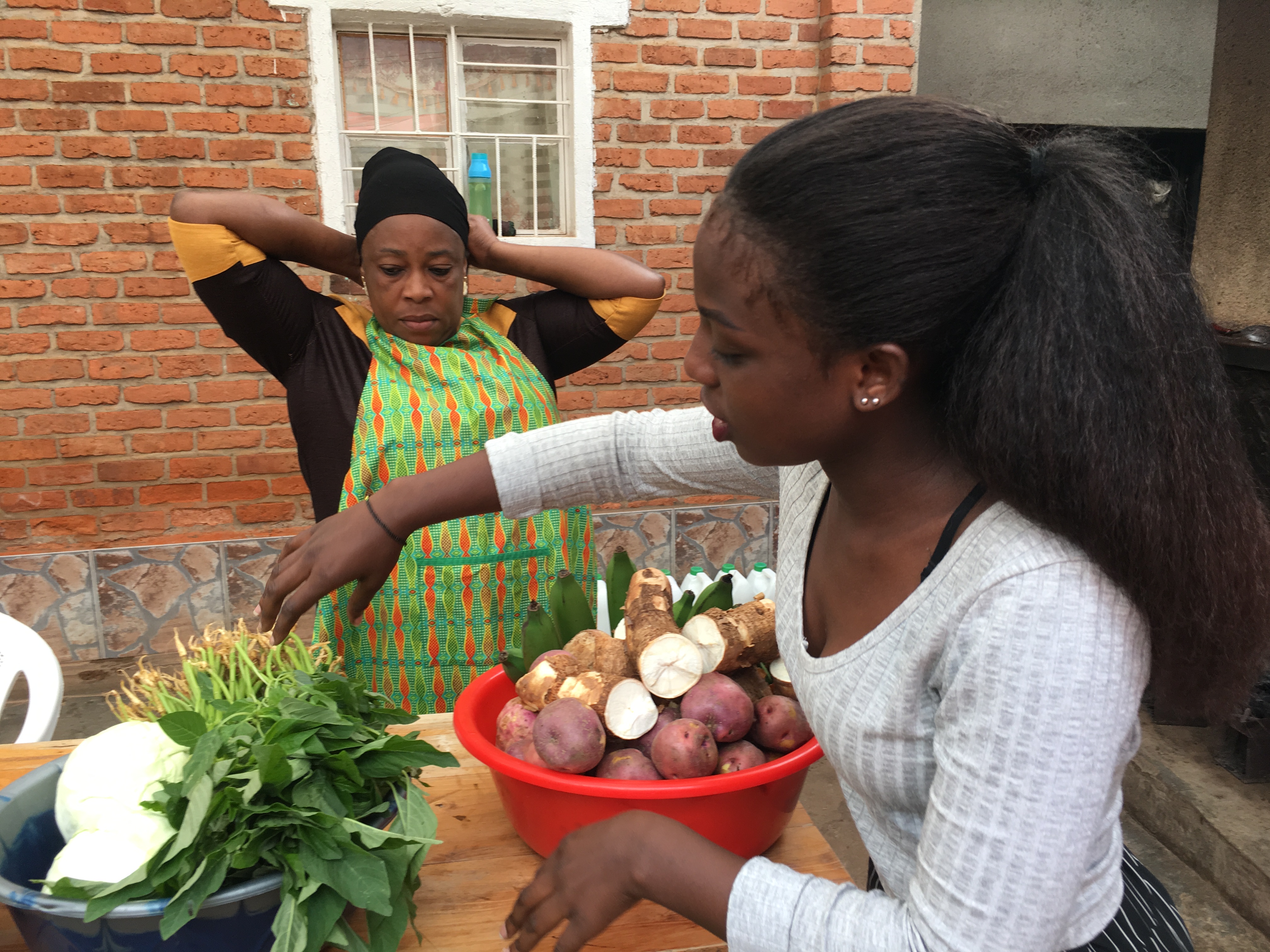 gender equality workshops. They now earn their funding through sustainable tourism, by providing tours and classes around Nyamirambo and employing local women to make clothes, bags and gifts to sell in the Center’s store.
gender equality workshops. They now earn their funding through sustainable tourism, by providing tours and classes around Nyamirambo and employing local women to make clothes, bags and gifts to sell in the Center’s store.
We opted to take the cooking class with Aminatha. She has been cooking with the Center since they began offering walking tours of Nyamirambo. She spent half the day by herself cooking a big meal for the tourists to enjoy at the end of their walking tour. People gushed over the food, saying it was the best meal they ever had, and asking Aminatha for her recipes. The Center saw another funding opportunity to make more money to help local women, so they began to offer cooking classes with Aminatha. The classes are now one of the most popular activities in Nyamirambo.
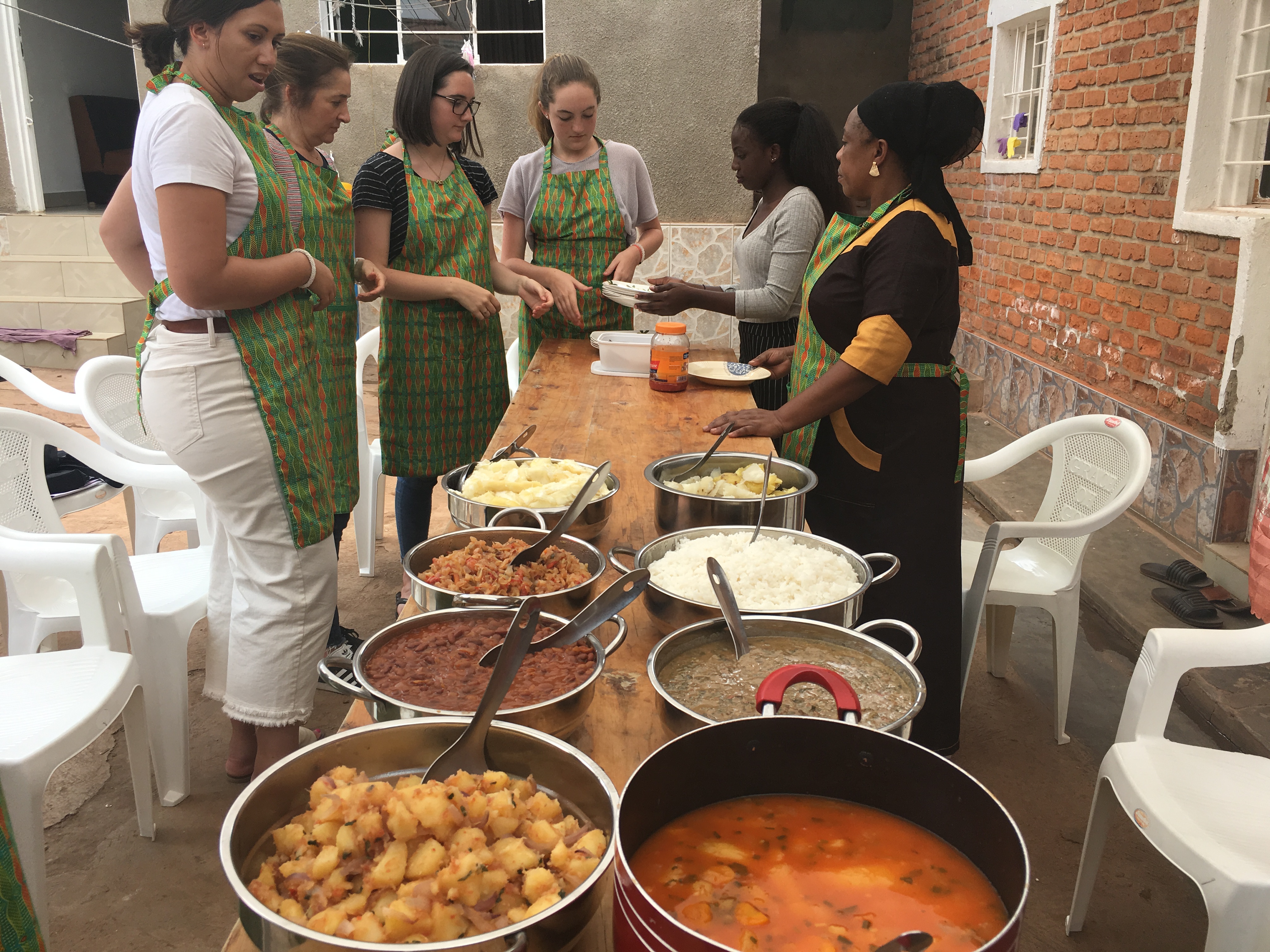 We began the class by meeting at the Center at 9 am to get a small introduction to the Center and the purpose of the class. We then took a short 5-minute walk along a dirt road to Aminatha’s house, where we met her while she was laying out the fresh vegetables on the table. Our translator and tour guide, a university student studying tourism, quickly explained what each of the vegetables were and how they would be used in the dishes we were about to prepare. Some of the ingredients were familiar, like carrots and tomatoes, but some were new to me, including dodo (basically the equivalent of spinach), African eggplant (small, white, pear-shaped eggplants) and cassava (a root vegetable similar to potatoes). Then, we got to work. Over the next three hours, we chopped, peeled, mixed and cooked all of our vegetables over a charcoal fire on the ground. All of the dishes used a lot of tomatoes and onions and Maggi seasoning, which is a dry spice similar to bouillon that Indian immigrants brought over. In the end, we created seven beautiful dishes:
We began the class by meeting at the Center at 9 am to get a small introduction to the Center and the purpose of the class. We then took a short 5-minute walk along a dirt road to Aminatha’s house, where we met her while she was laying out the fresh vegetables on the table. Our translator and tour guide, a university student studying tourism, quickly explained what each of the vegetables were and how they would be used in the dishes we were about to prepare. Some of the ingredients were familiar, like carrots and tomatoes, but some were new to me, including dodo (basically the equivalent of spinach), African eggplant (small, white, pear-shaped eggplants) and cassava (a root vegetable similar to potatoes). Then, we got to work. Over the next three hours, we chopped, peeled, mixed and cooked all of our vegetables over a charcoal fire on the ground. All of the dishes used a lot of tomatoes and onions and Maggi seasoning, which is a dry spice similar to bouillon that Indian immigrants brought over. In the end, we created seven beautiful dishes:
- Plain cassava and sweet potatoes, which is used as a base (like rice) to put different sauces and vegetables over;
- Dodo with African eggplant;
- Plantains in a tomato sauce;
- Potatoes with onions and seasonings;
- Cabbage mix with carrots and onions; and
- Beans with a tomato sauce.
The meal was truly the best food I’ve had since coming to Rwanda, and it wasn’t just because I was starving after spending half the day cooking. I will be dreaming about this meal until we go back to the Center to buy gifts and go on a walking tour.
On Saturday, I was invited last minute to a wedding reception by my coworker just outside the city in Kicukiro. As far as I gathered, this wedding was a mixture of a modern Catholic and traditional Rwandan wedding, which is now customary in the city. Traditionally, the ceremonies start weeks earlier with the Kuranaga, where a relative of a man picks out a potential bride for him. The man’s family selects a mediator to research the woman’s ancestry. Once the woman is approved, the fathers meet and agree to start the Gusaba, which is still practiced today. At this ceremony, the mediator asks the woman if she would like to marry the man. The ceremony includes riddles and tongue twisters, and the whole community is invited to take part. The families then negotiate a dowry, whereby the man’s family pays for the new bride. The families then fix a wedding date, and the bride goes into seclusion with her aunt for a couple of weeks, learning how to take care of a home and undergoing beauty treatments. At the end of this seclusion, the bride prepares a meal for her family and her groom’s family. The families then enjoy drinks and celebratory food together with the community.
I am not sure how much of these traditional ceremonies the bride and groom incorporated into this specific wedding. My coworker explained that two weeks prior, the bride and groom had a traditional ceremony with 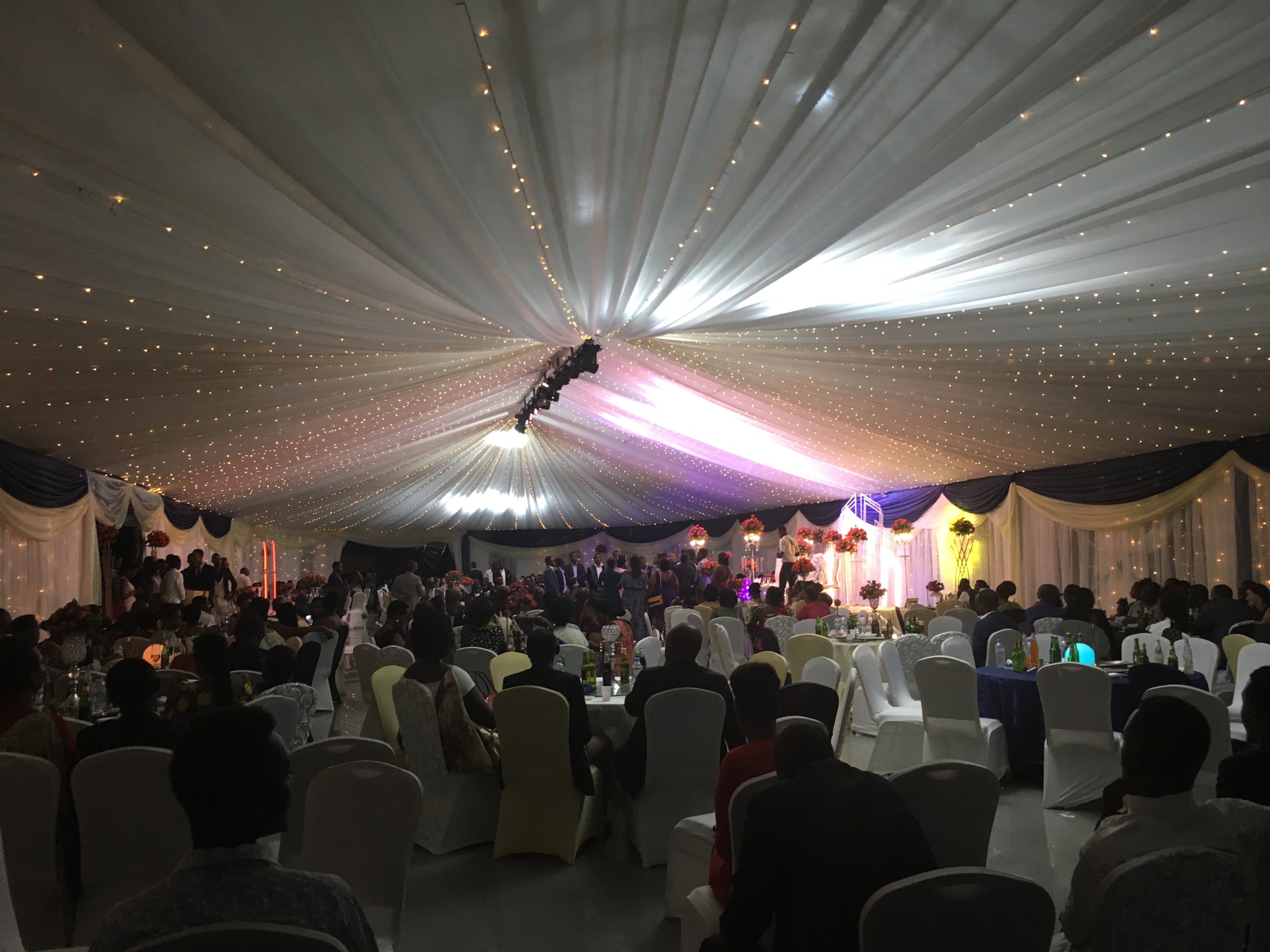 their family, which may have included some or all of these traditions. Last week, they had a civil ceremony, where they went to the courthouse to sign their marriage papers. That morning, they had a church ceremony, where they walked down the aisle in a typical Catholic ceremony. I, along with a lot of the community, was invited to the reception portion (the most fun part), where the newlywed couple and their families enjoyed food, drinks and performances.
their family, which may have included some or all of these traditions. Last week, they had a civil ceremony, where they went to the courthouse to sign their marriage papers. That morning, they had a church ceremony, where they walked down the aisle in a typical Catholic ceremony. I, along with a lot of the community, was invited to the reception portion (the most fun part), where the newlywed couple and their families enjoyed food, drinks and performances.
The location of the reception was a beautiful hotel overlooking the lush hills of Rwanda. The reception was in a huge white tent, decorated with twinkling fairy lights inside and a lavish bridal table adorned with pink and orange flowers. We picked a table and ordered a drink. Because there was no wine, I opted for a popular Rwandan beer, Skol (which honestly tastes just like Budweiser if you’re into that sort of thing). About 15 minutes later, a group of singers and dancers appeared at the entrance of the tent. Soon, the bridesmaids and groomsmen, dressed in magenta floor-length gowns and black tuxes, entered, followed by the bridge and groom. The bride had on a stunning, simple white dress with buttons lining the back and lace near her neck. They took a seat at their table and watched the performances.
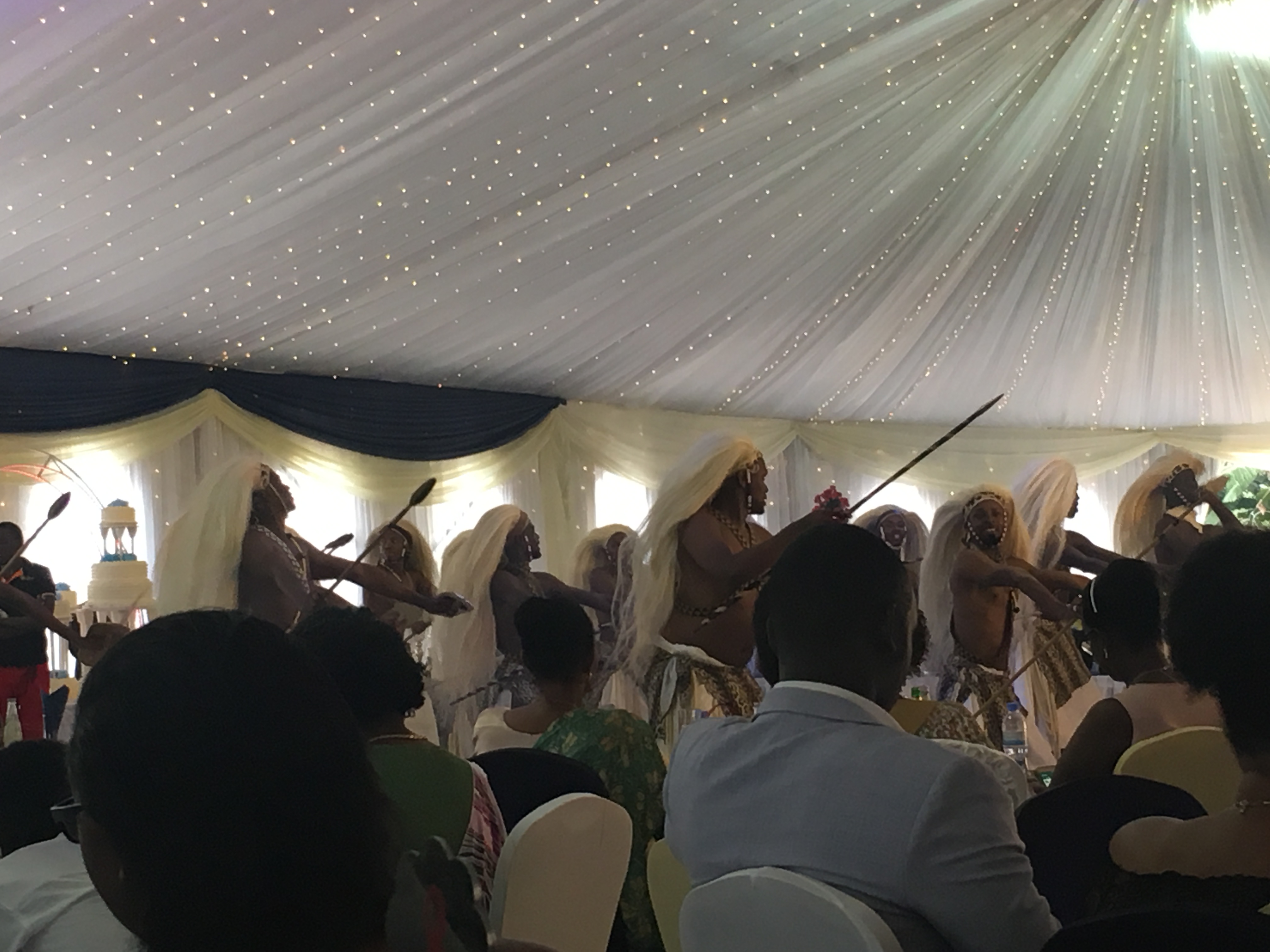 The next hour was filled with lively traditional Rwandan dancing. The most impressive dance was the intore dance by the men, who were dressed in traditional warrior clothing (long, blond wigs; bells on the ankles; spears; and cloth skirts). This is the most popular dance in Rwanda and was popularized by soldiers, who were comprised of community members. Traditionally, the dance was celebratory and indicated good economic activity or a good harvest. But it soon became popular among the army and began to symbolize unity among Rwandans during a time of political rivalry with Burundi in the 1800s. The dance including lively movements, loud drum beats, and lots of clapping from the audience.
The next hour was filled with lively traditional Rwandan dancing. The most impressive dance was the intore dance by the men, who were dressed in traditional warrior clothing (long, blond wigs; bells on the ankles; spears; and cloth skirts). This is the most popular dance in Rwanda and was popularized by soldiers, who were comprised of community members. Traditionally, the dance was celebratory and indicated good economic activity or a good harvest. But it soon became popular among the army and began to symbolize unity among Rwandans during a time of political rivalry with Burundi in the 1800s. The dance including lively movements, loud drum beats, and lots of clapping from the audience.
After the dancing, it was time to eat. We enjoyed a buffet of traditional Rwandan food and wedding cake. Then,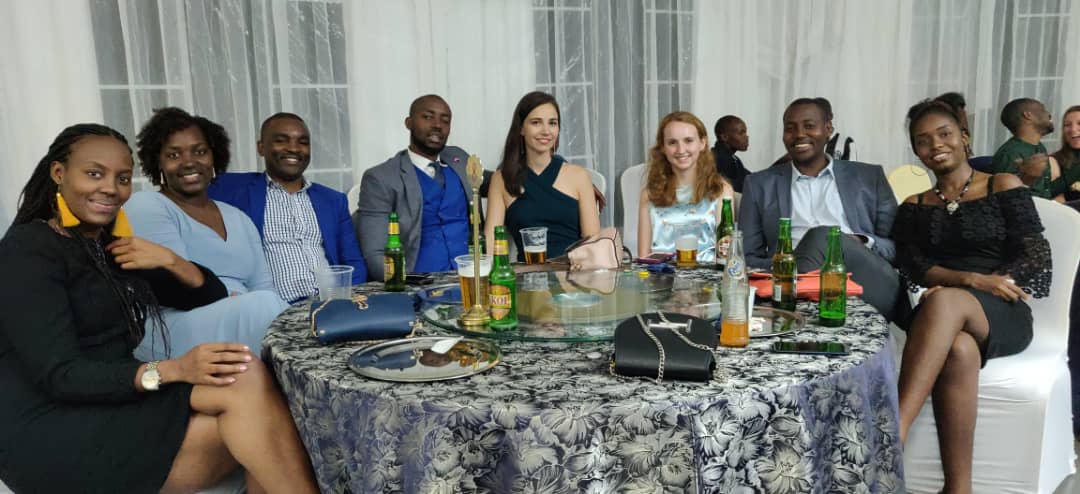 the guests, as families, approached the bride and groom one by one to present their gifts and wish them well for their future life together. It was a beautiful display of love, and the couple looked truly happy (albeit a little exhausted) at the end of the ceremony. After the bride and groom left, the guests casually held around, celebrating the couple and a beautiful summer evening.
the guests, as families, approached the bride and groom one by one to present their gifts and wish them well for their future life together. It was a beautiful display of love, and the couple looked truly happy (albeit a little exhausted) at the end of the ceremony. After the bride and groom left, the guests casually held around, celebrating the couple and a beautiful summer evening.